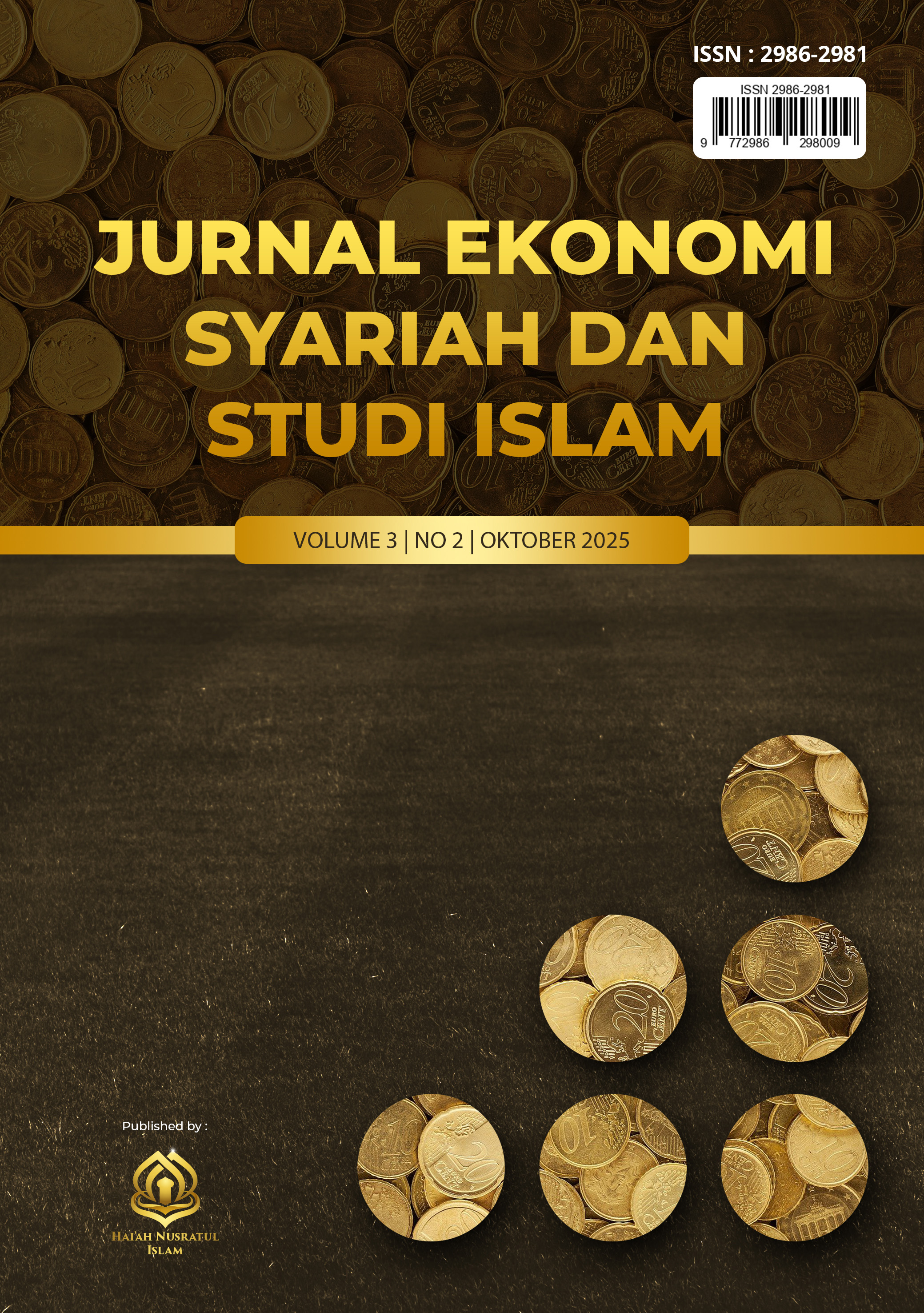TRANSFORMASI KESULTANAN BANJAR DI ERA DIGITAL
DOI:
https://doi.org/10.59548/je.v3i2.476Keywords:
Sultanate Of Banjar, Instagram, Cultural Heritage, Digital Identity.Abstract
Social media has transformed how identities and authority are represented in digital spaces. This study examines how the Sultanate of Banjar, which lost political power after its dissolution by the Dutch in 1905, employs Instagram as a medium for cultural representation and identity negotiation. Using a qualitative approach through literature review and document analysis of the official account @kesultananbanjar_official, the research applies representation theory, identity negotiation, and Reading Images Grammar of Visual Design as its framework. Findings reveal that the Sultanate revitalizes heritage through visual content, historical narratives, and hashtags such as #KesultananBanjar. By integrating religion, tradition, and mysticism, the account strengthens cultural identity and fosters interaction via likes, views, and collaborations. Ultimately, social media becomes a strategic arena for the Sultanate to preserve heritage, assert symbolic power, and expand cultural presence globally.
References
Alam, Sukma. “Penggunaan media sosial sebagai alat komunikasi politik.” Avant Garde 9, no. 1 (2021): 67.
Anshari, Faridhian. “Komunikasi politik di era media sosial.” Jurnal komunikasi 8, no. 1 (2013): 91–101.
Ardha, Berliani. “Social Media sebagai media kampanye partai politik 2014 di Indonesia.” Jurnal Visi Komunikasi 13, no. 1 (2014): 105–20.
Asran, Diana Safinda, dan Wening Udasmoro. “Konstruksi Identitas Niqabis melalui Selfie Instagram.” Jurnal Kawistara 10, no. 2 (2020): 159–71.
Damayanti, Vera. “Identifikasi struktur dan perubahan lanskap Kota Banjarmasin di masa kesultanan (1526-1860).” Arsitektur Lansekap 5, no. 2 (2019): 249–59.
Fahrezi, Muhammad Alqi, Abdillah Al Mushauwir, Wildan Nur Rahman, dan Fitroh Fitroh. “Systematic Literature Review: Peran Hashtag dalam Meningkatkan Visibilitas Konten Sosial Media (Studi Kasus: Instagram).” Jurnal Sains Pemasaran Indonesia (Indonesian Journal of Marketing Science) 21, no. 2 (t.t.): 142–53.
Fahruji, Deden. “Pemanfaatan media sosial dalam kampanye politik menjelang Pemilu 2024: Studi kasus tentang akun media sosial partai politik dan politisi.” JIKA (Jurnal Ilmu Komunikasi Andalan) 6, no. 2 (2023): 118–32.
Fiantika, Feny Rita, Mohammad Wasil, Sri Jumiyati, dkk. Metodologi Penelitian Kualitatif. Get Press, 2022.
Khatibah, Khatibah. “Penelitian kepustakaan.” Iqra’: Jurnal Perpustakaan dan Informasi 5, no. 01 (2011): 36–39.
Kress, Gunther, dan Theo Van Leeuwen. “The grammar of visual design.” London and New York: Routledge, 1996.
Muchamad, Bani Noor, dan Naimatul Aufa. “Rekonstruksi tipologi ruang dan bentuk istana Kerajaan Banjar di Kalimantan Selatan.” DIMENSI (Journal of Architecture and Built Environment) 36, no. 2 (2008): 115–26.
Mujiburrahman, Mujiburrahman, Alfisyah Alfisyah, dan Syadzali Ahmad. “Badingsanak Banjar-Dayak Identitas Agama Dan Ekonomi Etnisitas di Kalimantan Selatan.” Center for Religious & Cross-cultural Studies Sekolah Pascasarjana, UGM, 2011. https://idr.uin-antasari.ac.id/16489/1/badingsanak%20banjar%20dayak.pdf.
Mustika, Rieka. “Pergeseran Peran Buzzer Ke Dunia Politik Di Media Sosial.” Diakom: Jurnal Media Dan Komunikasi 2, no. 2 (2019): 144–51.
Muzainah, Gusti. “Baantar jujuran dalam perkawinan adat masyarakat Banjar.” Al-Insyiroh: Jurnal Studi Keislaman 5, no. 2 (2019): 10–32.
Priyadharma, Andi Achmad, Muhammad Yusuf Ridhani, dan Miftahul Ridhoni. “KARAKTERISTIK KELURAHAN KUIN UTARA, KOTA BANJARMASIN.” Density (Development Engineering of University) Journal 5, no. 2 (2023): 126–29.
Purbohastuti, Arum Wahyuni. “Efektivitas media sosial sebagai media promosi.” Tirtayasa Ekonomika 12, no. 2 (2017): 212–31.
Puspitarini, Dinda Sekar, dan Reni Nuraeni. “Pemanfaatan media sosial sebagai media promosi.” Jurnal Common 3, no. 1 (2019): 71–80.
Somantri, Gumilar Rusliwa. “Memahami metode kualitatif.” Makara Human Behavior Studies in Asia 9, no. 2 (2005): 57–65.
Syakhrani, Abdul Wahab, dan Ahmad Rangga Islami. “Islam di Tanah Banjar.” Cross-border 5, no. 1 (2022): 792–802.
Veniaty, Syarah. “Pamali pada perempuan hamil di masyarakat Banjar Kalimantan Selatan (kajian antropologi sastra).” Enggang: Jurnal Pendidikan, Bahasa, Sastra, Seni, dan Budaya 3, no. 2 (2023): 392–412.
Zahara, Tyas Alvionita. “Penerapan Syariat Islam di Kerajaan Banjar.” Jurnal Kewarganegaraan 7, no. 2 (2023): 2317–31.
Downloads
Published
How to Cite
Issue
Section
Categories
License
Copyright (c) 2025 Mira Ayudia Sari, Fadhel Muhammad (Author)

This work is licensed under a Creative Commons Attribution 4.0 International License.
- Share — copy and redistribute the material in any medium or format for any purpose, even commercially.
- Adapt — remix, transform, and build upon the material for any purpose, even commercially.
- The licensor cannot revoke these freedoms as long as you follow the license terms.
Under the following terms:
- Attribution — You must give appropriate credit , provide a link to the license, and indicate if changes were made . You may do so in any reasonable manner, but not in any way that suggests the licensor endorses you or your use.
- No additional restrictions — You may not apply legal terms or technological measures that legally restrict others from doing anything the license permits.
Notices:
You do not have to comply with the license for elements of the material in the public domain or where your use is permitted by an applicable exception or limitation .
No warranties are given. The license may not give you all of the permissions necessary for your intended use. For example, other rights such as publicity, privacy, or moral rights may limit how you use the material.












 Jurnal Ekonomi, Syariah dan Studi Islam by
Jurnal Ekonomi, Syariah dan Studi Islam by 
